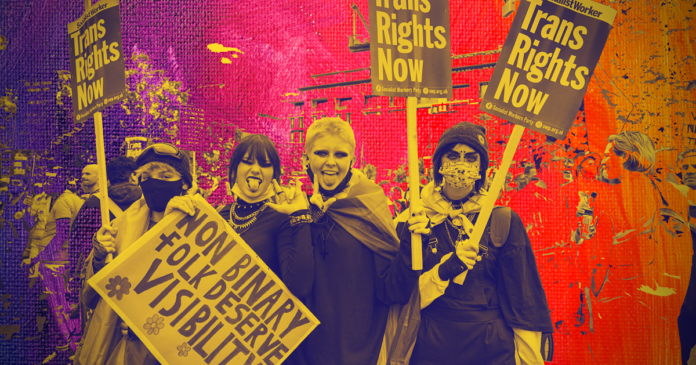
“There is this perception today that transness is a ‘trend’, associated with young people who are growing up and claiming this identity,” said Jesse Bayker, gender and sexuality historian at Rutgers University, New Jersey. He said this attitude is “used to marginalise” trans and gender nonconforming people.
Bayker’s research explores 19th- and 20th-century transgender histories in the US. He’s one of several academics I spoke to who elaborated on a long history of gender nonconforming people and subcultures around the world – and who explained why understanding this history is crucial for inclusive societies today.
The bottom line: trans and gender nonconforming identities aren’t new. This realisation disrupts ideas of Western societies being at the forefront of progressiveness, and can offer LGBTIQ people a critical sense of community – but it can also be liberating for everyone, as it is a story of resistance to gender norms.
Petition: Make sure you’re not funding anti-gay ‘conversion therapy’
After a six-month openDemocracy investigation, major aid donors and NGOs have said they will investigate anti-LGBT ‘conversion therapy’ at health facilities run by groups they fund.
But unlike the other aid donors, US aid agency PEPFAR has not responded at all.
Please sign this petition to show that it must take action now.
Gender nonconformity’s long history is “indubitable”, said Adnan Hossain, author of a forthcoming academic book about the hijra in Bangladesh, a gender nonconforming subculture dating from the Mughal empire, which lasted from the 16th to the 19th centuries. Some parts of the world “had more of a pattern of gender pluralism”.
“This idea that Western societies are uniquely progressive is something that needs to be challenged head on,” Hossain said. They described how British colonial rule in Bangladesh escalated the marginalisation of the hijra amid the “vilification of all non-heterosexual and nonbinary expressions and practices”.
Presenting trans and gender nonconforming identities as ‘new’ enables attacks on them, explained Kit Heyam, a UK-based trans academic. But “white nonbinary people instrumentalising the genders of people of colour, saying: ‘My gender is valid because look at the hijra’”, is also problematic.
“If we’re claiming community with people who are not from our culture, I think we have a responsibility to put work in to fully understand what it means to be someone of that particular gender […] and how we can fight for their rights,” Heyam said, rather than simply “using them to validate ourselves”.
You can find an increasing number of listicles online about, for example, ‘nonbinary communities around the globe’ or ‘historical figures you did not know were trans’. But they don’t do this history justice. Gender nonconformity has always been “disruptive” and prompted backlash, Heyam emphasised.
South Asia’s gender nonconforming subcultures “created this alternative space or countercultural formation in response to the mainstream masculinities that rejected them,” Hossain added. “The fact that [the hijra] exists is a testament to the resilience of these communities.”
In New Jersey, Bayker’s research has unearthed centuries-old stories of trans people not only living in the US but also “resisting oppression and arrest and when other people tried to stand in their way […] That’s also something that we often think is a more recent phenomenon: trans people fighting back – but it’s not.”
Liberating for everyone
Academics have studied the histories of gender nonconforming communities in numerous countries from Indonesia to Oman, and also in the Inca Empire.
Raven Dinelle, a “two-spirit” youth activist in Canada, previously wrote for openDemocracy about their community’s past and present resistance. “Colonialism attempted to crush our culture,” they wrote, but “today, Indigenous youth like myself are reclaiming our two-spirit identity.”
This identity, Dinelle explained, “refers to the distinct experience of those who don’t conform to heteronormativity or cisnormativity, and those who embrace gender diversity, while living within Indigenous traditions.” Once, they said, “we were revered for our capacity to bridge two worlds […] living outside of binaries.”
They also described how important it had been for them to “meet and learn about Indigenous peoples from Central and South America, Australia and New Zealand who are also standing strong against a centuries-old attack on our cultures”.
Learning about such histories can be liberating for everybody, Heyam argues: “It’s not just about trans people deserving a sense of history; it’s about making it clear that there is no such thing as ‘traditional static gender’.”
This should also be liberating for women who face restrictive gender norms, as well as for men who “are still oppressed by reductive understandings of masculinity,” they said. “We are all oppressed by the structures of gender that we have at the moment […] We all have a lot to gain by disrupting them.”








